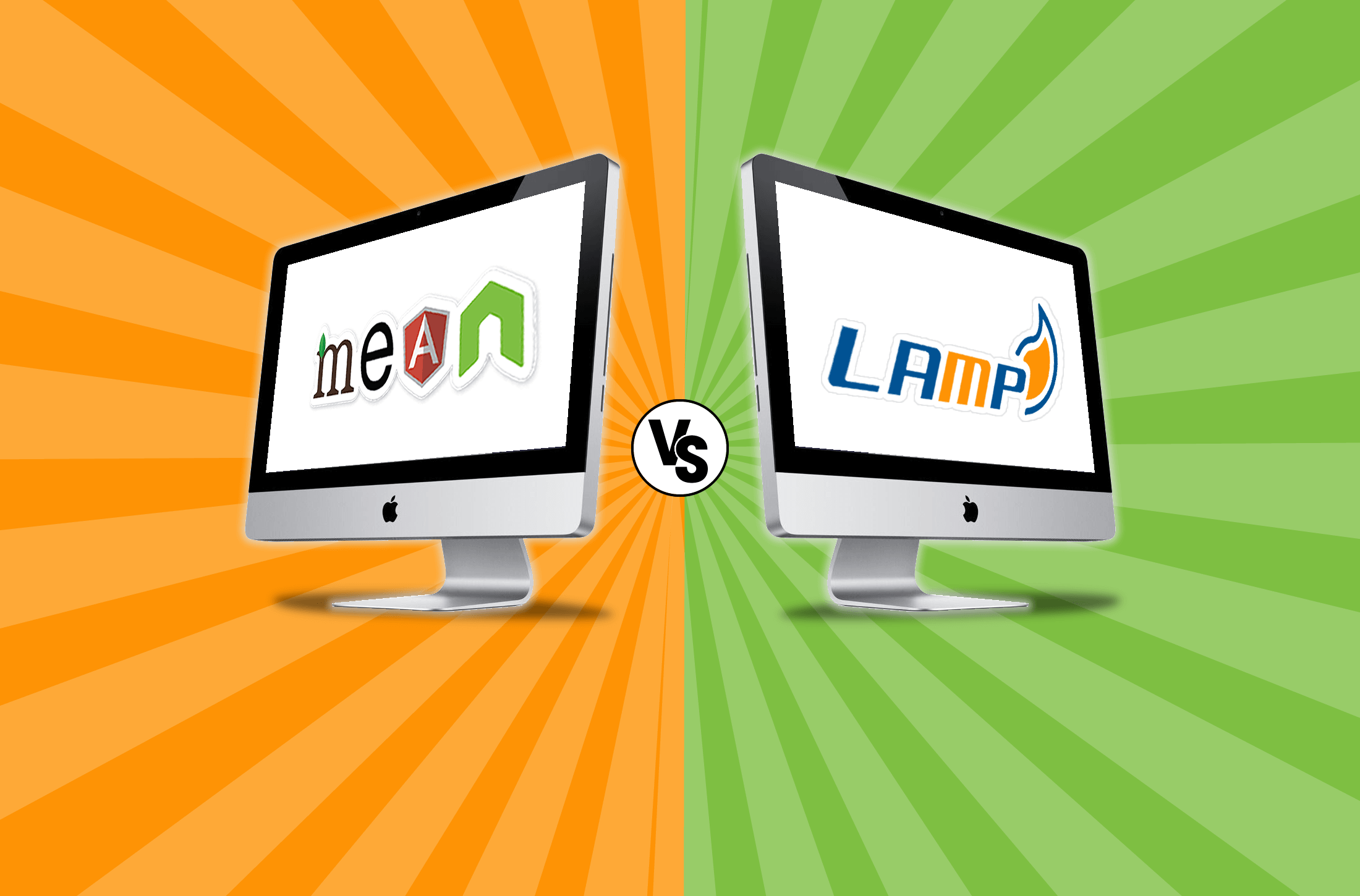MEAN vs MERN: Which Stack is Right for Your Next Project?

Embarking on a new web development project? Choosing the right technology stack can make all the difference in your project’s success. In the realm of web development, two popular stacks have emerged as powerful contenders: MEAN Stack Development and MERN Stack Development. But which one is the perfect fit for your next venture?
In this blog, we dive deep into the MEAN (MongoDB, Express.js, Angular, Node.js) and MERN (MongoDB, Express.js, React, Node.js) stacks, unraveling their components, exploring their strengths and weaknesses. So, whether you’re craving the robustness of Angular or the flexibility of React, we’ve got you covered.
Join us on this technology stack showdown as we help you unravel the mysteries and make an informed decision for your next project. Get ready to explore the realms of MEAN and MERN, and discover the stack that will propel your development journey to new heights!
Are you ready to embark on a stack-based adventure? Let’s dive in and find out which stack reigns supreme for your next project!
Understanding MEAN Stack:
In the world of full-stack JavaScript development, the MEAN stack stands as a popular choice. The acronym “MEAN” represents MongoDB, Express.js, Angularjs, and Node.js, which are the core components of this stack.
MongoDB:
At the heart of the MEAN stack lies MongoDB, a NoSQL database that offers scalability, flexibility, and high-performance data storage. With its document-oriented structure, MongoDB allows developers to store data in JSON-like documents, providing easy integration with JavaScript-based applications.
Express.js:
Express.js is a lightweight and flexible web application framework built on top of Node.js. It simplifies the process of building server-side applications by providing a robust set of features, including routing, middleware support, and an extensive ecosystem of plugins. Express.js acts as the glue that connects the various components of the MEAN stack.
Angular:
Angular, developed and maintained by Google, is a powerful front-end framework that enables developers to build dynamic and responsive user interfaces. It follows the Model-View-Controller (MVC) architecture and offers a rich set of features, including two-way data binding, dependency injection, and component-based development. Angular provides a comprehensive framework for creating complex web applications with ease.
Node.js:
Node.js is a server-side JavaScript runtime environment that allows developers to execute JavaScript code outside of a web browser. It provides a non-blocking, event-driven architecture, making it highly efficient for handling concurrent requests. Node.js enables server-side scripting, file system access, and networking capabilities, making it a crucial component of the MEAN stack.
Exploring MERN Stack:
Similar to the MEAN stack, the MERN stack is a full-stack JavaScript framework that offers a different set of components. The acronym “MERN” represents MongoDB, Express.js, React, and Node.js.
MongoDB:
As in the MEAN stack, MongoDB serves as the database component in the MERN stack. It’s a document-based model and scalability features make it an excellent choice for managing data in MERN applications.
Express.js:
Express.js plays a similar role in the MERN stack as it does in the MEAN stack. It acts as the backend web application framework, providing a seamless connection between the different components.
React:
In contrast to Angular, React is the front-end framework in the MERN stack. Developed by Facebook, React is a component-based library that enables MERN stack developers to build reusable user interface components. It offers a virtual DOM (Document Object Model) for efficient rendering and a one-way data flow, making it highly efficient for building interactive and responsive web applications.
Node.js:
Nodejs Development Services, as the runtime environment, remains consistent in both the MEAN and MERN stacks. Its event-driven, non-blocking architecture ensures fast and efficient handling of server-side operations.
Key Differences Between the MEAN and MERN Stacks:
Now that we have a basic understanding of the MEAN and MERN stacks, let’s dive deeper into their key differences. We will explore the front-end frameworks, databases, and server-side components of both stacks to help you understand which one aligns better with your project requirements.
Front-end Frameworks:
One of the major distinctions between the MEAN and MERN stacks lies in their choice of front-end frameworks.
MEAN Stack:
The MEAN stack utilizes Angular as its front-end framework. Angular is a comprehensive framework that provides a rich set of features for building complex, large-scale applications. It follows the MVC architecture and offers a robust toolset for data binding, routing, and component-based development. Angular has a steep learning curve but provides strong TypeScript support and a well-defined structure for organizing code.
MERN Stack:
On the other hand, the MERN stack employs React as its front-end framework. React is a component-based library that focuses on the efficiency of rendering user interfaces. It follows a one-way data flow and offers a virtual DOM for efficient updates. React is known for its simplicity, flexibility, and vibrant ecosystem of reusable components. It has a shallower learning curve compared to Angular, making it easier for developers to get started.
When deciding between the MEAN and MERN stacks, consider the complexity of your project, the preferences and expertise of your development team, and the scalability requirements of your application. Angular might be more suitable for large-scale enterprise applications, while React excels in building dynamic and interactive user interfaces.
Database:
MongoDB in both Stacks Both the MEAN and MERN stacks utilize MongoDB as their database component. MongoDB is a NoSQL database known for its flexibility, scalability, and document-oriented structure. It allows for the storage of JSON-like documents, making it compatible with JavaScript-based applications.
The choice of MongoDB in both stacks offers a unified database solution for storing and retrieving data. MongoDB’s flexible schema allows for easy adaptability to changing requirements during the development process. However, if your project requires strict data relationships and complex transactions, a traditional relational database might be a better fit.
Server-Side:
Express.js vs. Node.js While both stacks use Node.js as the server-side runtime environment, they differ in their choice of server-side frameworks.
MEAN Stack: In the MEAN stack, Express.js serves as the server-side framework. Express.js is a minimalist web application framework that provides essential features for building robust server-side applications. It offers routing, middleware support, and an extensive ecosystem of plugins, making it highly flexible and suitable for building APIs and server-side logic.
MERN Stack: Similarly, in the MERN stack, Express.js acts as the server-side framework. Its role remains consistent in both stacks, connecting the various components and handling HTTP requests.
The choice of Express.js in both stacks ensures a consistent server-side experience. Its lightweight nature allows for fast and efficient development, and its compatibility with Node.js makes it a versatile choice for handling server-side operations.
Scalability and Performance:
When evaluating a technology stack for your project, scalability and performance are critical considerations. Let’s examine how the MEAN and MERN stacks handle these aspects.
MEAN Stack’s Scalability:
The MEAN stack offers excellent scalability options. MongoDB, with its horizontal scaling capabilities, allows for distributing data across multiple servers, enabling seamless scaling as your application grows. Additionally, Node.js utilizes an event-driven, non-blocking I/O model, making it highly efficient and capable of handling a large number of concurrent requests.
Read Our Blog : How to Build a Scalable eCommerce Platform with MEAN Stack
MERN Stack’s Scalability:
Similarly, the MERN stack provides scalability options that leverage the strengths of its components. MongoDB’s ability to scale horizontally allows for accommodating increasing data loads. Node.js, with its event-driven architecture, ensures efficient handling of concurrent requests, contributing to the stack’s scalability.
Performance Considerations for Both Stacks:
Both stacks offer solid performance due to the use of JavaScript throughout the development stack. JavaScript, being a single-threaded language, excels at handling asynchronous operations, resulting in faster response times. However, it’s worth noting that performance can be influenced by various factors, such as code optimization, database design, and server configurations. Conducting thorough performance testing and optimization is crucial for achieving optimal results in either stack.
Developer Experience and Community Support:
The developer experience and community support surrounding a technology stack play a significant role in project success and efficiency. Let’s explore how the MEAN and MERN stacks fare in these areas.
MEAN Stack Developer Experience:
The MEAN stack provides a comprehensive development experience for JavaScript developers. It offers a unified language (JavaScript/TypeScript) throughout the stack, reducing context switching and facilitating code reuse. Angular, with its well-defined structure and extensive documentation, provides a robust development framework. Express.js and Node.js, being widely adopted and mature frameworks, have abundant resources and a large community for support and troubleshooting.
MERN Stack Developer Experience:
The MERN stack also offers a favorable developer experience. React’s component-based approach and reusability make development more efficient. React’s virtual DOM and declarative syntax contribute to a smooth and intuitive development process. Express.js and Node.js, being shared components with the MEAN stack, provide consistent developer experiences and have active communities.
Community Support for MEAN and MERN:
Both the MEAN and MERN stacks benefit from strong community support. They have active online communities, extensive documentation, and numerous open-source libraries and
tools available. The communities surrounding these stacks provide valuable resources, tutorials, and forums for developers to seek guidance and share knowledge.
Project Use Cases:
Determining the most suitable stack for your project depends on its specific requirements. Let’s briefly discuss some use cases where each stack shines:
When to Choose MEAN Stack:
When considering the MEAN stack for your project, there are specific scenarios where it shines and can be the right choice. Here are some situations where choosing the MEAN stack may be beneficial:
Large-scale enterprise applications:
If you’re working on a complex and data-intensive enterprise application that requires a robust framework with a structured architecture, MEAN stack with Angular can be a suitable choice. Angular’s comprehensive features and TypeScript support make it well-suited for building large-scale applications.
Full-stack JavaScript expertise:
If your development team has strong expertise in JavaScript and prefers working with a unified language throughout the entire stack, the MEAN stack can be a good fit. With MEAN, you can leverage the JavaScript/TypeScript skills of your team across the front-end (Angular), back-end (Node.js), and database (MongoDB) components.
Strong consistency in data relationships:
If your project requires strict data relationships and complex transactions, the MEAN stack with MongoDB as the database component can be a good choice. MongoDB’s flexible data model allows for managing complex data structures and adapting to changing requirements, making it suitable for projects where data relationships are crucial.
Access to a mature and supportive community:
The MEAN stack has a large and active community of developers. It means you’ll have access to extensive documentation, tutorials, and support resources. The community’s expertise and contributions can be invaluable in resolving issues and finding solutions during the development process.
Rapid prototyping and development:
The MEAN stack, with its components like Angular and Node.js, provides a solid foundation for rapid prototyping and development. If your project requires fast iteration cycles and quick deployment, the MEAN stack can offer the necessary tools and libraries to accelerate the development process.
Remember, these are general guidelines, and the choice of the MEAN stack development company should always align with the specific requirements and goals of your project. Evaluating factors such as team expertise, scalability needs, and project complexity will help you make an informed decision.
When to Choose MERN Stack:
The MERN stack is a powerful combination of technologies that can be a suitable choice for various types of projects. Here are some scenarios where choosing the MERN stack may be beneficial:
Dynamic and interactive user interfaces:
If your project requires building dynamic and interactive user interfaces, the MERN stack with React can be an excellent choice. React’s component-based architecture and efficient rendering make it ideal for creating responsive and visually appealing UIs.
Rapid development and prototyping:
The MERN stack, with its lightweight and flexible components, enables fast development cycles. If your project requires quick iterations and prototyping, the MERN stack can provide the necessary tools and libraries to speed up development.
React ecosystem and reusable components:
The MERN stack benefits from the extensive ecosystem of React libraries and tools. If your project can benefit from leveraging existing solutions, reusable components, and community-driven resources, the MERN stack can be a great fit.
JavaScript expertise and unified language:
If your development team has strong expertise in JavaScript and prefers working with a unified language throughout the entire stack, the MERN stack is an excellent choice. With MERN, you can leverage the JavaScript skills of your team across the front-end (React), back-end (Node.js), and database (MongoDB) components.
Single-page applications (SPAs):
If your project focuses on building single-page applications, where the content dynamically updates without requiring page reloads, the MERN stack can provide the necessary tools and libraries for efficient SPA development.
It’s important to consider your project’s specific requirements and goals when choosing the MERN stack. Factors such as the need for flexibility, interactivity, rapid development, and access to the React ecosystem play a significant role in determining whether the MERN stack is the right fit.
Pros and Cons of MEAN and MERN Stacks
When considering the MEAN and MERN stacks for your next project, it’s important to weigh their pros and cons. Let’s examine the advantages and disadvantages of each stack to help you make an informed decision.
Pros of MEAN Stack:
- Comprehensive framework: Angular provides a robust and opinionated framework for building large-scale applications, offering features like two-way data binding, dependency injection, and a structured architecture.
- Strong data modeling: MongoDB’s flexibility and scalability make it suitable for managing complex data structures, allowing for easy adaptation to changing requirements.
- Extensive community support: MEAN stack components, including Angular, Express.js, and Node.js, have active and well-established communities, providing ample resources, tutorials, and support.
Cons of MEAN Stack:
- Steep learning curve: Angular’s comprehensive nature may result in a steeper learning curve compared to other front-end frameworks, requiring more time and effort for Mean Stack developer to become proficient.
- Opinionated structure: The opinionated nature of Angular may limit flexibility for certain projects that require more customization.
- Performance concerns: The overhead of Angular’s features and complexity may impact performance, especially in applications with high traffic or specific performance requirements.
Pros of MERN Stack:
- Lightweight and flexible: React’s component-based approach allows for modular and reusable code, making development more efficient and enabling rapid iteration.
- Vast ecosystem: React has a vast ecosystem of open-source libraries and tools, providing developers with a wide range of options for building interactive and dynamic user interfaces.
- Simplicity and ease of learning: React’s simplicity and declarative syntax make it easier for developers to learn and adapt, allowing for faster development cycles.
Cons of MERN Stack:
- Lack of strict structure: The flexibility of React may result in different project structures and coding practices, potentially leading to inconsistencies within a team or project.
- Limited server-side framework options: While Express.js is a versatile server-side framework, the MERN stack primarily relies on it, limiting choices for server-side development.
- Limited support for complex data relationships: MongoDB’s document-oriented structure may present challenges when dealing with complex data relationships that require strict data integrity.
By considering these pros and cons, you can determine which stack aligns better with your project’s requirements, team expertise, and long-term goals.
Conclusion:
In this blog, we explored the MEAN and MERN stacks, comparing their components, discussing their differences, and evaluating their pros and cons. We discussed front-end frameworks, databases, server-side components, scalability, performance, developer experience, and community support.
Whether you choose the MEAN stack with its comprehensive Angular framework or the MERN stack with its lightweight and flexible React library, it’s important to consider the specific needs of your project, the expertise of your team, and the scalability and performance requirements.
Remember to conduct thorough research, analyze your project’s needs, and consult with your development team to make an informed decision. Both the MEAN and MERN stacks have proven their effectiveness in various contexts, so it’s a matter of finding the stack that best aligns with your project vision and goals.
We’re honored to mention that our efforts have been recognized by renowned B2B review and research platforms such as GoodFirms, Clutch, MirrorView, and many more.
Similar Posts

MEAN Stack vs LAMP Stack
When you require a server-side infrastructure for your web development project, readily the LAMP stack comes to mind. For years it has acquired the status of default infrastructure choice comprising four most popular languages, respectively Linux, Apache, MySQL and PHP....

Decoding FinTech Business Models: A Comprehensive Guide
What if you could carry your bank in your pocket, transfer money across continents with a few taps, or invest in the stock market without ever setting foot in a brokerage? Welcome to the world of FinTech, where innovation meets finance and traditional boundaries are being redrawn at an unprecedented pace. Did you know that […]...

7 Steps to Make Your Ecommerce Business Successful
You must have heard about those eCommerce stores doing millions of dollars in revenue. But that’s not the reality for many. There are about 12 million eCommerce websites online and less than a million make under $1000 per year. ...







